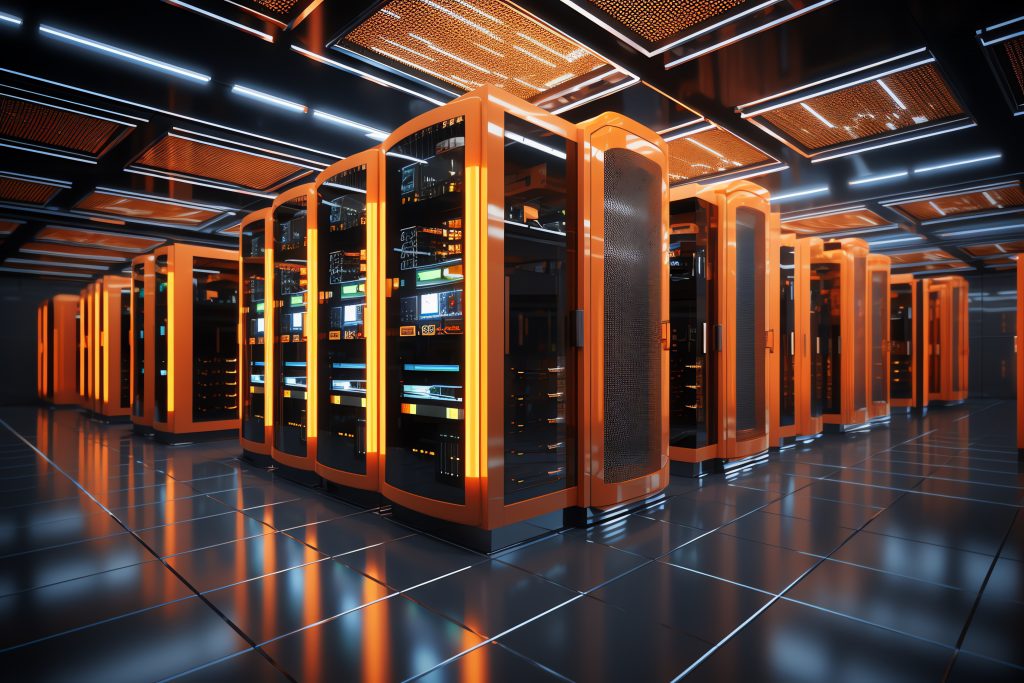The Philippines data center market is expected to attract USD 1,016 million in investments by 2028, rising at a CAGR of 11.01% between 2023 and 2028. The country is undergoing a digital transition while rapidly transforming its enterprises and organizations, assisted by cloud service companies such as Google Cloud, Alibaba, Amazon Web Services (AWS), and Tencent Cloud. Here are some of the biggest data centers and colocation facilities in the Philippines.

What is Colocation in the Philippines?
Colocation hosting is analogous to leasing a home for your server. The server rental provider offers you storage, electricity, internet access, cooling, and protection for your computer or other gear. Colocation hosting is sometimes disregarded since it is more pricey and takes more upkeep than other types of hosting.
Digital Transformation of Colocation in the Philippines
Cloud computing, present digital transformation, and outstanding growth in online connectivity on a global scale, as well as sectors in the Philippines, such as BFSI, healthcare, and telecommunications, shifting demands to the cloud will drive the Philippines information center market.
Demand for Colocation in the Philippines
Retail colocation is predicted to grow at a CAGR of roughly 7.5%, while wholesale colocation, driven mostly by large-scale providers of cloud services, is expected to rise at a CAGR of over 51%. Enterprise businesses in the Philippines have been proactively shifting applications to the cloud, driving up demand for SAAs or hyperscale capacities during the projection period. E-commerce, BFSI, healthcare, public sector organizations, and other industries will drive up consumer interest in colocation and cloud services between 2023 and 2028.
Socioeconomic Scale of Colocation in the Philippines
The Philippines’ information technology colocation industry is in its early stages of expansion and will be worth US$134 million in 2024. Through 2027, the sector will increase steadily at a five-year CAGR of 25%.
The Philippines is on course to become a large-scale industry faster rather than later. Total inventories are predicted to rise at a five-year CAGR of 26% on a MW basis, with hyperscale equipment growing at a substantially faster CAGR of 48%.
Digitization Growth
The growing need for access and digitization propels the expansion of global internet infrastructure. The large amount of resources necessary to modernize digital networks is also creating chances for data center category participants. Development in the next generation of data centers will continue to expand as businesses craft innovative models and approaches that stand out in today’s interlinked and online commercial landscape.
IT Infrastructure for Colocation in the Philippines
Because of the increased digitization of corporate operations, cloud usage, and big data, the importance of data centers for each firm and the public sector is growing globally. However, spending in this sector fluctuates due to the high one-time cost of owning and establishing data centers. According to Statista, investment in IT infrastructure increases during times of good economic outlook and high utilization of new technologies and software but then declines.
Top Colocation Centers in the Philippines
Northgate Technologies, Inc.

ePLDT

Globe

DBP Data Center Inc.

Digital Edge Data Center

NTT Data

Why are Data Centers Important?
Data centers hold and manage vast amounts of data that businesses rely on on a daily basis. They specifically host the hardware required for organizations to run and manage their IT conditions, such as:
- Networks
- Applications
- Security
- Virtual computers
Without a data center, a company has no place to store its hardware-powered software and successfully manage its operations.
How do Facilities for Colocation in the Philippines work?
Data centers are outfitted with a variety of innovations, which include servers, storage units, and connectivity (and network security) equipment, all of which work together to handle and spread data across various devices and locations. These are enormous spaces that host computer systems and other archives, processing, and administrative technology.
How are Data Centers managed?
Datacenter administration entails monitoring the facility’s climate and humidity, executing frequent data backups, doing hardware and software maintenance, and assuring the facility’s security and protection against cyberattacks. Furthermore, data center management entails ensuring that the facility runs efficiently and economically with an emphasis on lowering energy usage and increasing uptime.
Choosing the right Data Center or Colocation in the Philippines
- Servers are the principal computing devices for processing and managing data.
- Storage devices used to store vast amounts of data;
- Networking equipment, such as routers, switches, and other components that link and communicate with the various devices within the data center and
- Cooling systems, such as air conditioning, ventilation, and, in rare situations, liquid cooling, keep the facility at an optimal temperature and humidity level to minimize overheating and equipment failure.
These facilities additionally need backup power information, such as batteries or uninterruptible electricity supplies (UPS), to guarantee that activities continue uninterrupted in the case of a power outage.
Types of Data Centers and Colocation in the Philippines
- Edge data centers – Smaller data centers are positioned closer to end customers, allowing for quicker and more effective utilization of processing facilities and services.
- Modular data centers – Self-contained computer facilities that can be deployed in remote regions or areas with limited infrastructure or space.
- Cloud data centers – Run by cloud service providers, provide virtualized computer resources and services via the Internet.
- Colocation data centers – Share computer resources and services across various businesses, allowing them to reap the rewards of a data center without having to build their own unique facility.
Tiers of Data Centers and Colocation in the Philippines
- Tier 1 centers are the most basic, with a single power and cooling channel with an uptime of 99.671%.
- Tier 2 data centers have some backup in the cooling and power infrastructure, permitting repairs and renovations without disrupting operations, and have a 99.741% uptime.
- Tier 3 data centers contain dual-powered equipment and multiple energy and cooling pathways, resulting in a 99.982% uptime.
- Tier 4 data centers include all of the capabilities of the lower tiers plus additional redundancy and fault tolerance, such as multiple continuous electrical and cooling distribution pathways, a 99.995% uptime, and the ability to manage several concurrent hardware breakdowns.

With cloud-based storage rapidly becoming the norm, data centers are no longer separate units that company owners and employees must rely on from time to time. They have evolved into key participants in regular operations, serving as extensions of the organization. A storage facility can assist your company’s productivity in a variety of ways.
To start, it allows up premises by processing data off-site. Second, it gives you continuous access to your data, allowing you to work any time and anywhere you want. Third, it provides you with the peace of mind that your information is securely stored, allowing you to focus on working without fear of losing essential files. With digitization growing more rapidly in the Philippines, Colocation and data centers are becoming more essential by the day.









